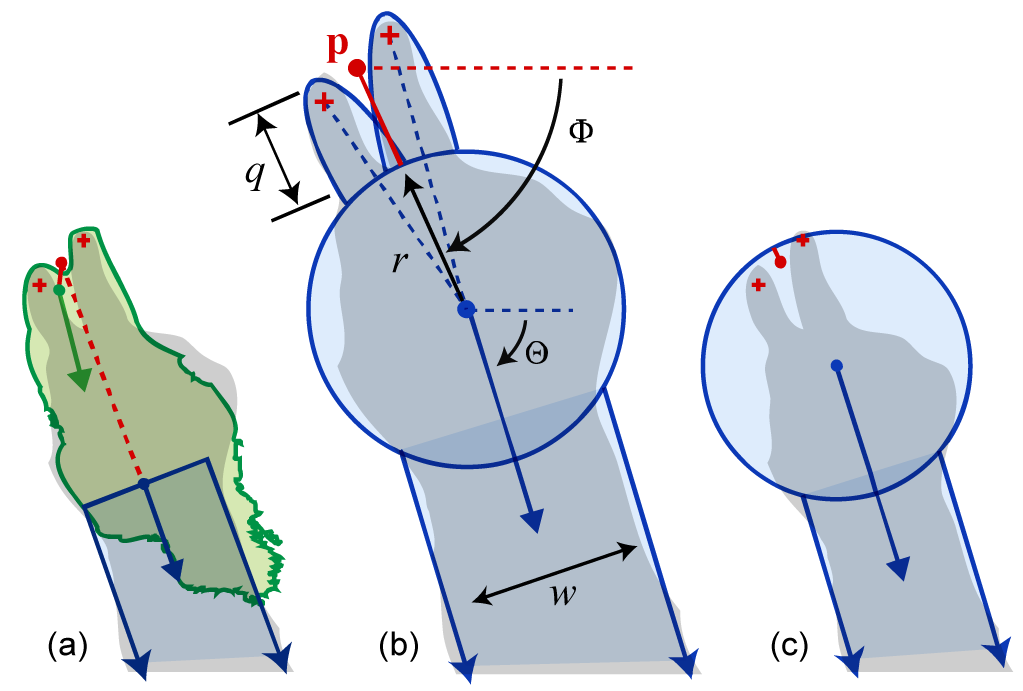Section: New Results
Hand occlusion on mutitouch surfaces
Participant : Géry Casiez [correspondant] .
Operating a computer by directly touching the display surface has many benefits, and in tabletop computing, multi-touch is arguably the most natural form of input. However, with any form of direct input, where the input device and the output display are coincident, the hand and arm cover - or occlude part - of the display. This can be a problem, because compared to manipulating objects on a real tabletop, a tabletop computer is dynamic and can display relevant information, sequential widgets, and system messages in occluded areas.
We examined the shape of hand and forearm occlusion on a multi-touch table for different touch contact types and tasks. Individuals have characteristic occlusion shapes, but with commonalities across tasks, postures, and handedness. Based on this, we create templates for designers to justify occlusion-related decisions and we propose geometric models capturing the shape of occlusion. A model using diffused illumination captures performed well when augmented with a forearm rectangle, as did a modified circle and rectangle model with ellipse "fingers" suitable when only X-Y contact positions are available (Figure 5 ). Finally, we describe the corpus of detailed multi-touch input data we generated which is available to the community [24] .



